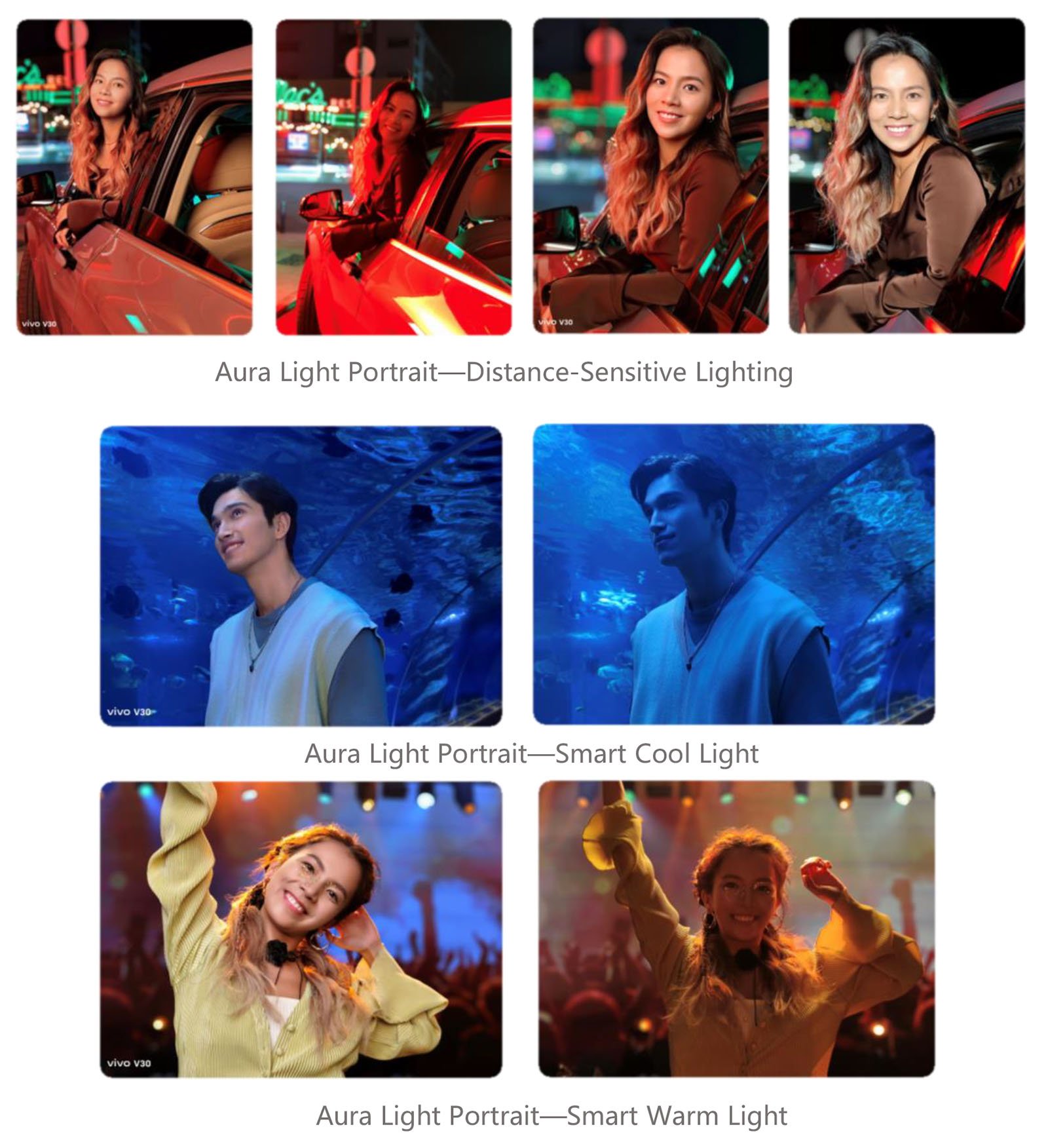Vivo’s New V30 Promises Better Portraits Thanks to a Smarter Flash
![]()
While most smartphone manufacturers are focusing on software to make portraits better, Vivo’s new V30 improves its flash system, making it smarter and more able to adapt to light level, subject distance, and color temperature.
Arguably refocusing on the basic principles of photography instead of leaning only on AI post processing, Vivo’s V30 introduces an improved Aura Light strobe that it says is able to emit light in an area 19 times larger and 40 times softer than the standard smartphone flash. With it, Vivo says the V30 can capture portraits in low light that simultaneously provide vivid detail as well as skin texture without looking harsh and flat.
![]()
While Vivo is leaning on physically shaping light in order to achieve these goals, that doesn’t mean AI isn’t involved at all; it’s more a dual hardware and software approach. Vivo says that the V30 can automatically recognize when to enable the Aura Light flash based on the shooting scene and can then use AI to intelligently recommend options to create a better portrait.
Firstly, Aura Light can tune its output for both near and far subjects. The company says it supports “Distance-Sensitive Lighting” and adjusts the brightness to compensate. When the subject is close, the light is softer and “more balanced.” When the subject is farther away, the flash is brighter.

Secondly, Aura Light reads the color temperature of a scene and adapts its output accordingly. Called Smart Color Temperature Adjustment, Vivo says that the light it emits will align with the environment and, compared to the last version of Aura Light, the V30 is able to offer a broader range of color temperature adjustment (it has a range of 1800K to 5000K while the previous version only featured a range of 1800K to 4500K).
“The Smart Color Temperature Adjustment feature prevents excessive blurring caused by ambient light and ensure harmonious colors between the subject and the environment,” Vivo claims.
The enhancements to Aura Light aren’t just positioned to improve portraits: Vivo also touts it as excellent for food photography. The smartphone has a dedicated Aura Light Food Mode which combines the actual light with “3D virtual fill light,” which is a software-based exposure adjustment. The company says this enables users to capture bright, textured, and “appetizing” food photos quickly and easily.
The enhanced Aura Light is paired with Vivo’s 50-megapixel VCS True Color main camera. VCS stands for “Vivo Camera-Bionic Spectrum” and is a technology that the company says enhances color accuracy to closely resemble human eye perception. The claim is that the sensor results in a 25% increase in “image purity” and a 15% boost in color reproduction compared to the V29.
![]()
This sensor, which is a Type 1/1.55, is fitted behind an Optical Image Stabilization (OIS) to reduce motion blur and Vivo says that it brings “flagship level” light sensitivity to work better in a wider range of lighting conditions. Vivo is confident enough in the sensor to encourage capturing night photos, cloudy shots, or even the woods or a park at night.
Aura Light can also be used for video capture, which makes shooting in low light easier. Vivo says that when shooting video, Aura Light can be combined with its Hybrid Image Stabilization that mixes OIS with electronic image stabilization to create clear, stable footage.
The V30 also features a 50-megapixel wide-angle camera as well as a 50-megapixel front-facing selfie camera that is specifically tuned to expertly capture single subjects and groups.
![]()
Under the hood, the V30 is powered by a Snapdragon 8 Gen 3 processor, features up to 12GB of RAM, and a 5,000 mAh battery set inside Vivo’s slimmest phone ever and behind a 3D curved AMOLED screen that promises a 120Hz refresh rate and up to 2,800 nits of peak brightness.
The V30 is being positioned as “flagship level,” although the company’s line indicates it’s more of a mid-range device. At the time of publication, Vivo did not provide final pricing or specific availability for the U.S. market, although it is expected to become available in March.
Image credits: Vivo